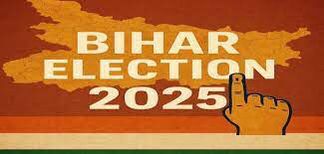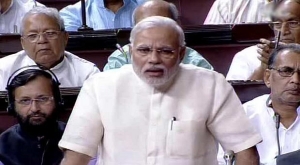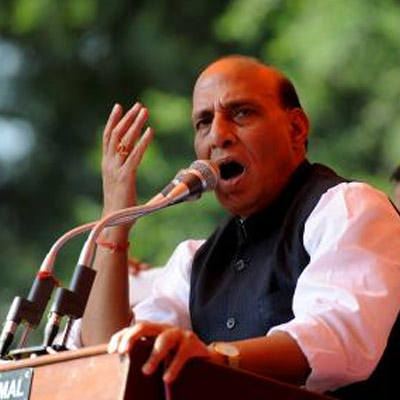Bihar Verdict 2025: Who Gained Power And Who Lost Ground

New Delhi | November 15, 2025 The National Democratic Alliance (NDA) has recorded one of its strongest victories in Bihar in nearly twenty years. Winning 200 out of 243 seats, the coalition has not only held its ground but surpassed expectations, giving Chief Minister Nitish Kumar and the BJP-led alliance a commanding mandate that even outshines their 2010 performance. The verdict highlights shifting voter priorities, strong grassroots mobilisation, and changing caste and regional equations. Here’s a simplified look at the biggest winners and losers of the 2025 Bihar Assembly election. WINNERS 1. Nitish Kumar After two decades in office, Nitish Kumar has once again demonstrated his political resilience. His party, the JD(U), not only survived anti-incumbency but improved its numbers, finishing with 85 seats. With the NDA crossing the 200-seat mark, Nitish Kumar is on track for a fifth term. The result also pushes back Tejashwi Yadav’s attempts to emerge as the next big face of Bihar politics. The popular “youth versus experience” narrative did not translate into votes. 2. Chirag Paswan Chirag Paswan’s Lok Janshakti Party (Ram Vilas) pulled off one of the election’s most striking turnarounds. After winning only a single seat in 2020 despite a sizeable vote share, the party converted its support into 19 seats out of 29 contested. His growing popularity among Dalit communities and young voters was a major factor. 3. AIMIM and Asaduddin Owaisi Asaduddin Owaisi’s AIMIM performed strongly in the Seemanchal region, winning four seats — Jokihat, Kochadhaman, Amour and Baisi. These were the same constituencies the party secured in 2020, showing a stable support base in the region. 4. Women Voters Women played a decisive role in shaping the outcome. For the first time, their turnout surpassed that of men by nearly nine percentage points (71.6% vs. 62.8%). Schemes like the Rs 10,000 Mukhyamantri Mahila Rozgar Yojana significantly boosted support among poorer and backward sections. 5. Smaller NDA Allies The NDA’s smaller partners—HAM (Jitan Ram Manjhi), RLM (Upendra Kushwaha), and LJP(RV) (Chirag Paswan)—delivered strong numbers. HAM led in five of six seats, LJP(RV) dominated in 20, and RLM secured four. LOSERS 1. Tejashwi Yadav and the RJD Despite being projected as the Opposition’s key leader, Tejashwi Yadav could not convert discontent against the government into votes. The RJD managed only 25 seats, its second-worst performance after 2010. Tejashwi retained Raghopur, but the broader momentum he gained in 2020 has stalled. 2. Rahul Gandhi Congress once again failed to make an impact, ending in single digits. Despite campaigns, yatras and allegations of irregularities, the party struggled to connect with voters — echoing its 2020 performance. 3. Prashant Kishor Once considered India’s most influential poll strategist, Kishor’s Jan Suraaj made almost no mark. Despite a long padyatra and visibility, it polled fewer votes than NOTA. His development-first narrative failed to resonate, and the decision not to contest seats confused many supporters. 4. Mukesh Sahani Despite being positioned as a key figure in Seemanchal and being named deputy CM face by the Opposition, Mukesh Sahani’s VIP failed to convert its caste mobilisation into electoral gains. Much of the Nishad vote shifted towards the NDA. 5. INDIA Bloc The INDIA alliance suffered a major setback ahead of crucial upcoming elections. Internal disagreements, weak communication, and unclear leadership hurt the coalition. Overall, the Opposition secured only 35 seats, with Congress collapsing to single digits, RJD unable to expand, and Left parties losing earlier strongholds. Bihar Verdict 2025: Who Gained Power And Who Lost Ground The 2025 Bihar result has reshaped the state’s political landscape, giving the NDA a powerful mandate and setting the tone for upcoming national battles. With the alliance winning 200 out of 243 seats, the verdict signals a strong endorsement of Nitish Kumar’s leadership and a clear shift in voter sentiment. Women voters, welfare-driven communities and key regional blocs played a major role in deciding the outcome. While leaders like Nitish Kumar and Chirag Paswan strengthened their political standing, the Opposition struggled to build momentum. The RJD, Congress and the broader INDIA bloc failed to convert dissatisfaction into electoral gains. Prashant Kishor’s Jan Suraaj and Mukesh Sahani’s VIP also fell short despite aggressive campaigns. The results highlight how organisational strength, targeted welfare schemes and unified messaging can reshape election outcomes. Bihar’s verdict is not just a win-loss story; it reflects how voter priorities are evolving and how leadership experience continues to outweigh experimental alternatives in the state’s political imagination.




